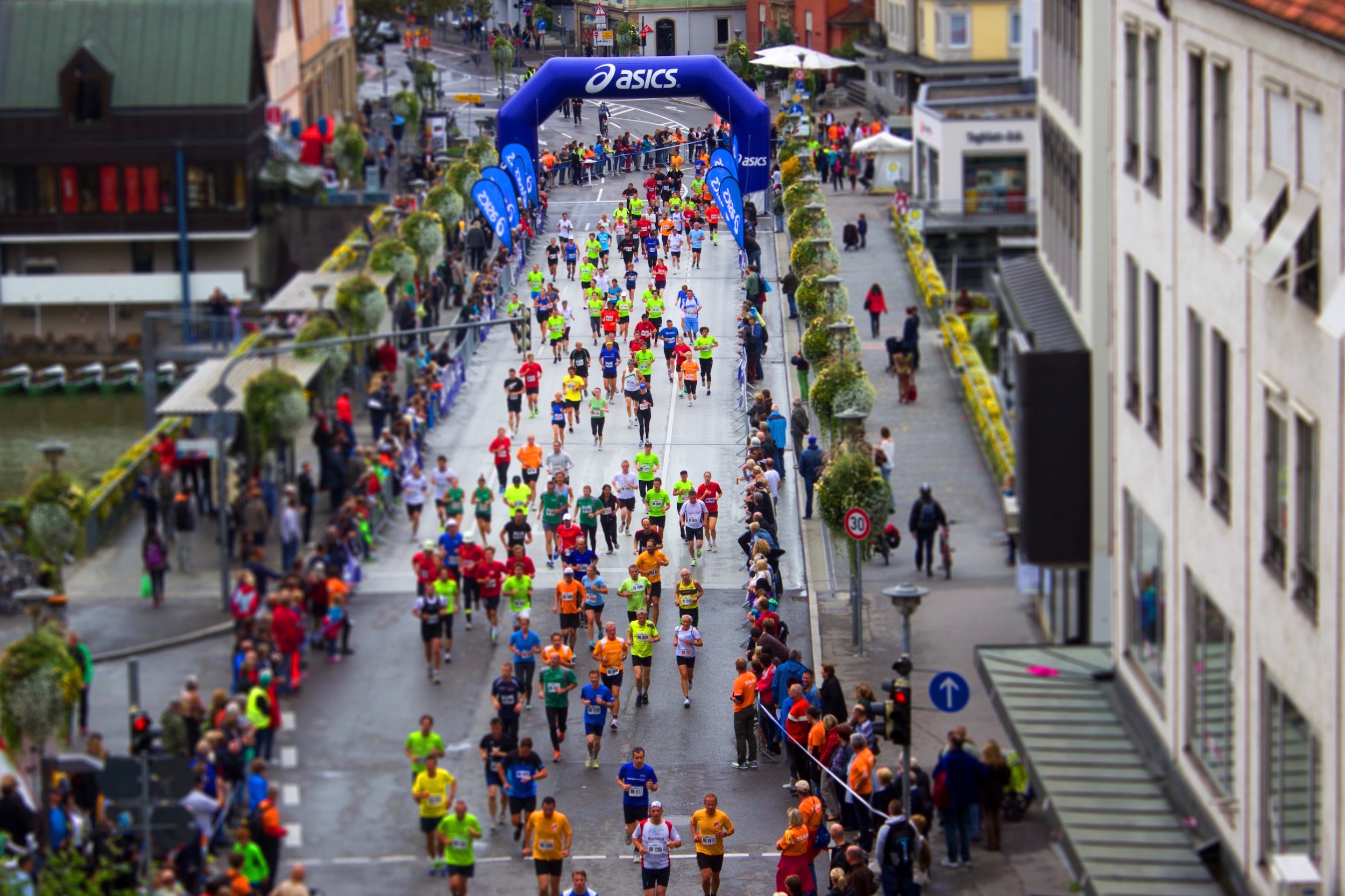
The marathon is my favorite distance due to the mental stamina required to finish the 26.2 mile race. I’ve run six marathons; Sri Chinmoy (1981), San Francisco (1984), Mayor’s Midnight Sun (2000), California International (2001), St George (2003), and Boston (2006).
I remember quite vividly the dueling voices in my head at the St George Marathon; the “censor” chattering away with unhelpful advice like “you can always come back next year”. The “cheerleader” vociferously drowned out the “censor” with “if you miss the qualifying time by a couple of minutes you are going to be devastated.” I had arrived at the halfway mark at just over 2 hours. I would have to run the second half faster than the first If I was going to meet the sub 4:00 hour Boston qualifying time. After about ten minutes, I made an affirmative decision to “give it everything that I’ve got” and the chattering stopped. I crossed the finish line in 3:57:52 qualifying for Boston at age 45.
Ten Tips for Running a Marathon
- Plot out a training schedule. Strava offers a pace calculator, as well as, an online community and activity tracking for runners and cyclists. The Hansons Marathon Method 18-week beginner program starts at 15 miles a week and builds to the upper 50’s. The longest run is 16 miles.
- Run some shorter races i.e. 5k’s and 10k’s. 5k’s are “speed work” for the marathon.
- Run at least a couple of 16-20 mile runs. You don’t have to run the full 26.2 mile distance in training. The general rule of thumb is if you can run two-thirds of the distance or roughly 17.5 miles you will finish the race. 16-20 mile training runs are confidence builders.
- Familiarise yourself with the course elevation. If the course has a significant drop in elevation, as St George does, incorporate some downhill running into your training. Downhill running takes a surprisingly big toll on your legs.
- Experiment with power gels in training. Ingest one power gel approximately every 10k or 3-4 total and no more than one caffeinated power gel to avoid heart palpitations.
- Fully hydrate. This is especially critical if you’ll be running in hot or humid climates. At the Sri Chinmoy Marathon in Davis, CA, my first marathon, the temperature reached 78 °F by 11 AM. I drank a glass of water every hour the day before the race.
- Drive over the race course to get the “lay of the land.” Some race organizers offer a course tour.
- Resist the urge to take off like a rocket. Try to run an even pace or better yet “negative splits” defined as running the second half faster than the first.
- Break the marathon into 26 one-mile races. See Jane Run owner, Lori Shannon says “If you can run a mile you can run a marathon.” You can run a mile, right?
- The last 10k is going to be tough. The human body is not physiologically designed to run 26.2 miles. You’re probably familiar with the term “hitting the wall” where glycogen stores in the muscles become depleted and you feel like you are running with cement blocks for shoes. You’ll feel mentally and physically spent when you cross the finish line as if you’ve really accomplished something. Don’t be surprised if you cry.
Is this your first marathon? Do you have a marathon training program? Do you have a marathon finish time goal?
_____Susan M Hall is an American long-distance runner with a goal to run a 10k in all 193 UN recognized countries plus the two permanent non-member observer states of Palestine & the Holy See.
On her radar are the Košice Peace Half Marathon ☮️ Kosice, Slovakia, the Istanbul 15k 🇹🇷, Istanbul, Turkey the Beirut Half Marathon, Beirut, Lebanon, the Pyramids Half Marathon, Giza, Egypt & the Quantum Nicosia Half Marathon, Nicosia, Cyprus.
